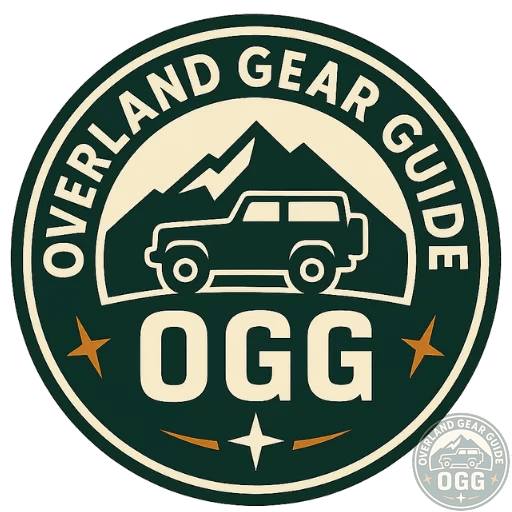
Border Crossing 101: The Smart Overlander’s Guide
Navigating international borders doesn’t have to be stressful. This guide covers the documents, insurance, vehicle permits, and on-the-ground tactics that keep you moving.
- Documents You Need (and how to organize them)
- Vehicle Permits: Carnet vs TIP
- Insurance & Green Card basics
- Border Approach & Scripts
- Official fees, deposits & “unofficial requests”
- Pets, health & biosecurity essentials
- Ferries, RoRo & shipping notes
- Timed pre-border checklist (30/15/5)
- Troubleshooting & when to use a fixer
1) Documents You Need (and how to organize them)
At minimum, have: passport, visa (if required), vehicle registration/title, driver’s license + IDP, proof of insurance (or Green Card), and either a Carnet de Passage or a Temporary Import Permit (TIP). Keep originals together in a single folder, plus photocopies and cloud/offline scans. Photograph key pages so you can prove details if connectivity fails.
2) Vehicle Permits: Carnet vs TIP (what, when, why)
Carnet de Passage (CdP)
A Carnet functions like a passport for your vehicle—customs record your temporary admission instead of demanding a cash deposit. It’s widely used across parts of Africa, Central Asia and some Middle Eastern borders, and is issued by your national automobile association.
Correct stamping (entry/exit/guarantee pages) is critical—missing exit stamps can trigger duty claims against the carnet guarantee. Keep scans and photos of every page and fix errors before you leave the post.
Temporary Import Permit (TIP)
A TIP is a country-specific permit issued by the local customs authority that lets your foreign-registered vehicle enter for a defined period without paying duties. It’s usually issued at the border and ties to your passport/vehicle registration.
TIPs are often cheaper and simpler for single-country trips or shorter stays; watch out for deposits and make sure you get a clear exit stamp and cancellation receipt.
3) Insurance & the Green Card
The Green Card is an internationally recognized proof of third-party liability cover used across much of Europe and parts of MENA. Carry the original (and digital), check plate/VIN accuracy, and verify validity dates before you travel. Acceptance varies—confirm with your insurer and national bureaus.
Busy or remote posts sometimes push overpriced/invalid policies; buying in advance or through a broker reduces risk and speeds the conversation at the window.
4) Border Approach: posture, lane choice & scripts
Arrive organized: slow, steady approach in the correct lane for foreign/tourist vehicles; greet politely; hand over documents in the order expected; answer briefly (“tourism / crossing through to X”). Calm, clear behavior reduces secondary inspections.
When presenting a Carnet, hand it over early and ensure the right boxes are stamped while you watch. Photograph updates before you leave.
5) Fees, deposits & “unofficial requests”
If you’re asked for a bond/deposit, insist on a stamped, itemized receipt with VIN/plate, the legal basis for the charge, and the reclaim procedure. Photo the receipt, keep originals safe, and follow up by email so there’s an independent record.
6) Pets, health & biosecurity essentials
Carry pet medical files and be ready for inspection; many posts care about rabies vaccination status and carriers. Keep human prescriptions organized and translated where appropriate. Some countries have biosecurity checks—declare food, seeds, and soil-carrying gear.
7) Ferries, RoRo & shipping notes
Don’t assume your home policy covers sea legs or port storage—many require a marine extension or separate hull policy. Photograph the vehicle before handover and keep the bill of lading and condition report.
8) Timed pre-border checklist (30 / 15 / 5 minutes)
30 minutes out
- Top up fuel if you’ll be below half a tank before the next town; quick oil/coolant/tyre checks.
- Lay out passport, visa, reg/title, Carnet or TIP, insurance, letters of authorization—in the order you’ll hand them over.
- Count local currency; many posts are cash-only and prefer small bills.
15 minutes out
- Secure roof/loose gear; contain pets; reduce visual clutter in the cabin.
- Open a window for documents; bring forward official letters/translations.
5 minutes out
- Engine off when instructed; hands visible; remove sunglasses/masks.
- Present only what’s requested, in order. Ask for written instructions or a supervisor if more is demanded.
9) Troubleshooting & when to use a fixer
Common snags: mismatching names, expired registration, missing lien letter—carry templates and scans to resolve on the spot. For deposits, keep immaculate records of receipts and stamped pages to reclaim funds later.
Use vetted fixers/customs brokers only for complex cases; get a written mandate and fixed fee up front. Often, the right broker pays for themselves in speed and compliance.
Quick wins (pin these on your phone)
- Proof of onward travel (ferry/return ticket or next-border plan) reduces suspicion you’ll “import” the vehicle permanently.
- If a Carnet is unfamiliar, show a photo of a correctly filled page and politely point to required boxes.
- If you lack a Carnet, offer a cash bond with a receipt and clear refund steps; contact your embassy if needed.

